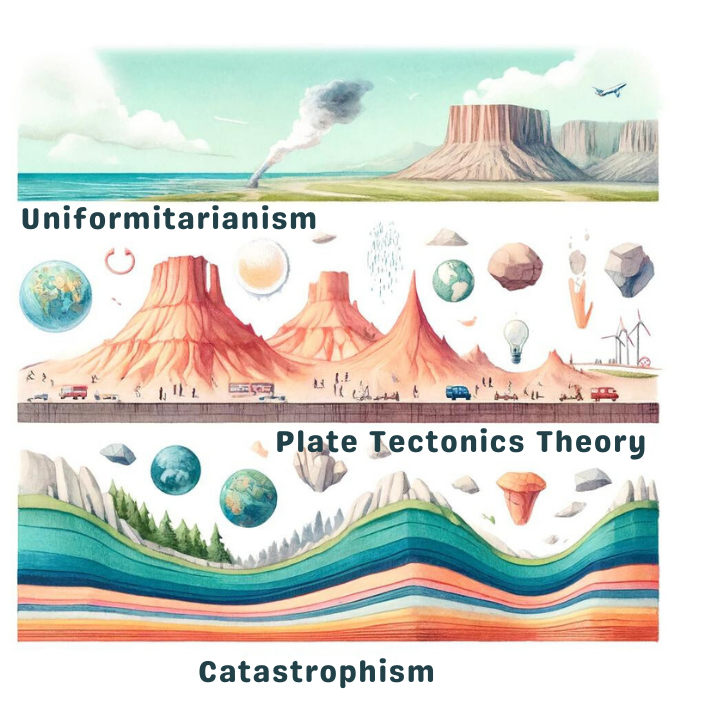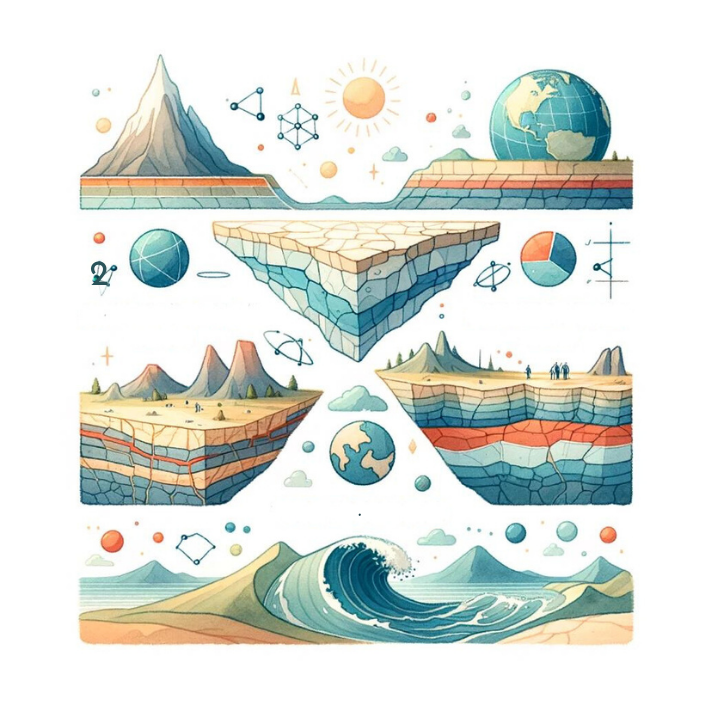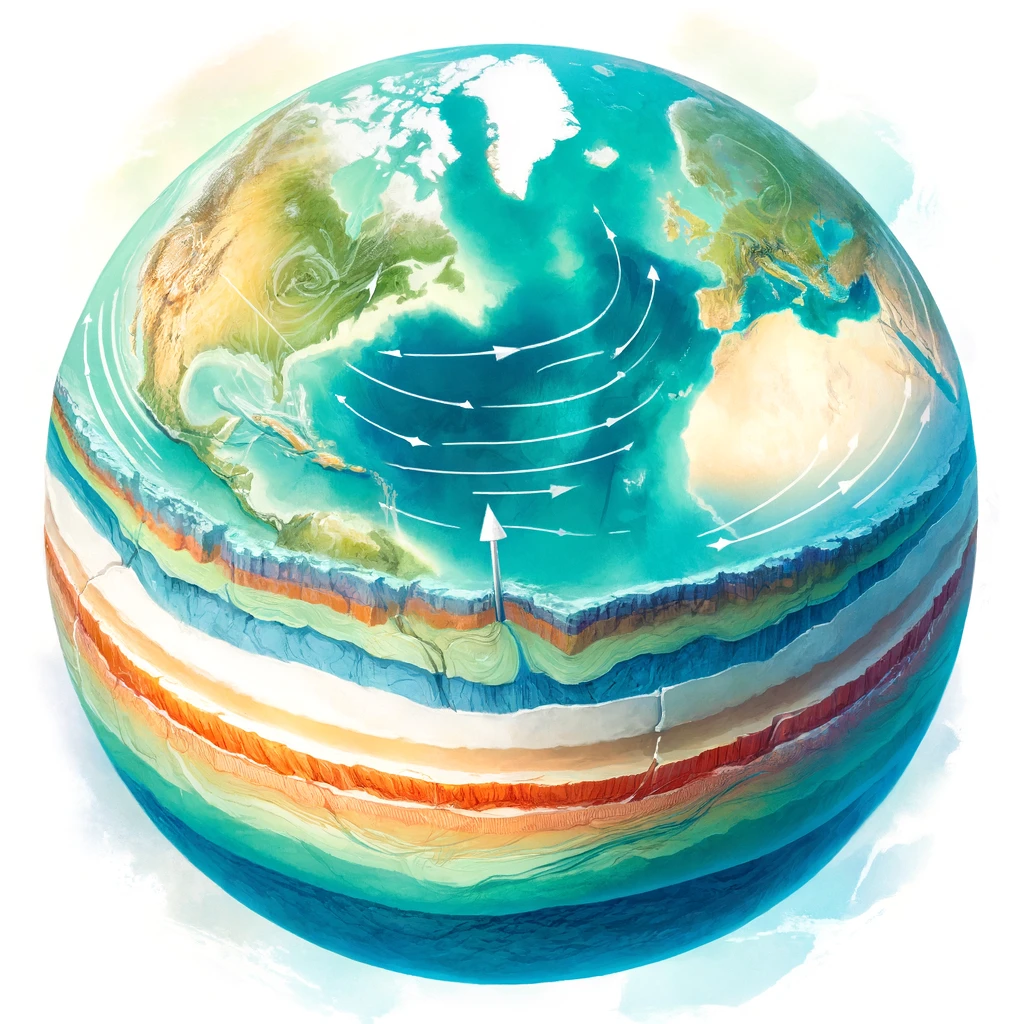Geomorphology is the study of landforms and the processes that shape them. It looks at mountains, valleys, rivers, and more. With geomorphology notes, students learn how landscapes change over time. This field combines geology, geography, and environmental science to explore Earth’s surface.

Uniformitarianism
Concepts and Principles
- Uniformitarianism is a fundamental principle in geology, first proposed by James Hutton in the late 18th century and popularized by Charles Lyell in the 19th century.
- The principle states that the Earth’s processes occurring today (like erosion, sedimentation, and volcanic activity) have worked in the same way throughout geological time.
- This concept is encapsulated in the phrase “the present is the key to the past,” suggesting that by understanding current processes, we can interpret the geological history of the Earth.
Key Proponents
- James Hutton: Often called the “Father of Modern Geology,” he introduced the idea that geological processes are slow and continuous.
- Charles Lyell: Expanded Hutton’s ideas in his book “Principles of Geology,” which strongly influenced the scientific community and supported the theory of gradualism in geology.
Impact on Geomorphological Studies
- Uniformitarianism shifted the scientific approach from viewing the Earth’s features as results of short-lived catastrophic events to understanding them as products of long-term processes.
- It laid the foundation for modern geology and geomorphology, promoting detailed field observations and the study of processes like weathering, erosion, and sediment transport.
Catastrophism
Historical Background
- Catastrophism is the theory that Earth’s landscape has been shaped primarily by sudden, short-lived, violent events, possibly worldwide in scope.
- This idea was dominant before the advent of uniformitarianism and was supported by scientists like Georges Cuvier in the early 19th century.
Comparison with Uniformitarianism
- Catastrophism posits that major changes in the Earth’s crust result from catastrophic events such as volcanic eruptions, earthquakes, and floods.
- Uniformitarianism, on the other hand, argues that these changes occur gradually over long periods.
- While catastrophism emphasizes rapid and dramatic change, uniformitarianism focuses on slow, steady processes.
Modern Perspectives
- Today, the scientific community recognizes that both uniformitarianism and catastrophism play roles in shaping the Earth’s surface. For example, the extinction of the dinosaurs is attributed to a catastrophic asteroid impact. While the formation of mountains occurs through slow tectonic processes.
Plate Tectonics Theory

Mechanisms of Plate Movements
- The theory of plate tectonics explains the movement of the Earth’s lithospheric plates in the asthenosphere due to convection currents in the mantle.
- These movements are driven by heat from the earth’s interior. This causes mantle material to rise and fall, creating currents that push and pull the plates.
Types of Plate Boundaries
- Divergent Boundaries:
- Plates move apart.
- Example: Mid-Atlantic Ridge, where the Eurasian and North American plates are separating.
- Convergent Boundaries:
- Plates move towards each other.
- Example: The Himalayas, formed by the collision of the Indian and Eurasian plates.
- Transform Boundaries:
- Plates slide past each other.
- Example: San Andreas Fault in California, where the Pacific Plate moves northward relative to the North American Plate.
Real-World Examples:
- The Ring of Fire: A major area in the Pacific Ocean basin known for its frequent earthquakes and volcanic eruptions, caused by the movements of several major tectonic plates.
- The East African Rift: A divergent boundary in East Africa where the African Plate is splitting into the Somali and Nubian plates.
Geomorphological Cycle
Davis’s Cycle of Erosion
- Proposed by William Morris Davis in the late 19th century, it describes the stages of landscape evolution: youth, maturity, and old age.
- Youth: Characterized by steep gradients, V-shaped valleys, and active downcutting.
- Maturity: Development of broader valleys, meanders, and reduced gradient.
- Old Age: Formation of wide floodplains, extensive meanders, and minimal elevation differences.
Penck’s Slope Evolution Theory
- Walther Penck challenged Davis’s model by emphasizing the role of uplift and erosion working simultaneously.
- He proposed that slopes evolve through a continuous process of backwearing (parallel retreat) and downwearing (vertical erosion), leading to more complex and varied landforms.
Dynamic Equilibrium Theory in Geomorphology
- Introduced by John Hack in the mid-20th century, this model suggests that landscapes are constantly adjusting to changing conditions to reach a state of dynamic equilibrium.
- It emphasizes the balance between tectonic forces that uplift the land and erosional forces that wear it down.
Conclusion
The theories of landform development, from uniformitarianism and catastrophism to plate tectonics and geomorphological cycles, provide a comprehensive understanding of the processes that shape our planet’s surface. Each theory contributes uniquely to our knowledge, helping us interpret the past and predict future changes in the Earth’s landscape. For UPSC aspirants, mastering these concepts is essential for a thorough understanding of physical geography.



